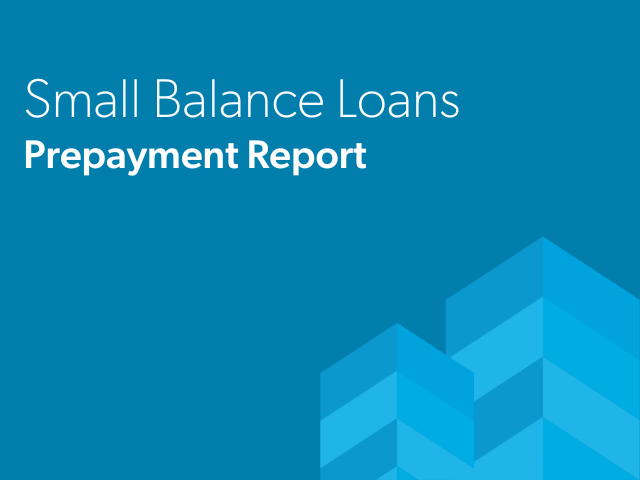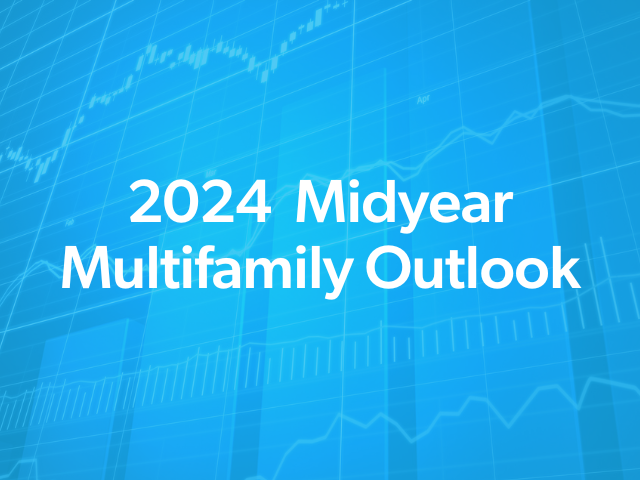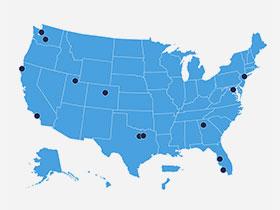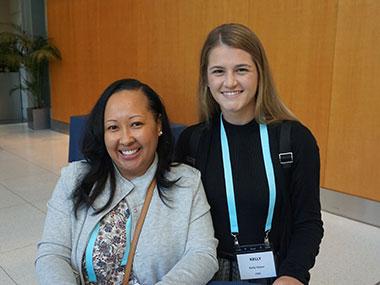Prepayment Trends in Multifamily

Historically, we’ve found that prepayment speeds increase as loans season and prepayment premiums decrease. This trend is especially supported by strong multifamily property price appreciation and low interest rates, as seen beginning of this year. In our latest prepayment reports, we examine prepayment activity from July 2021 through June 2022 in closer detail.
These reports summarize prepayment speeds in the aggregate and by product type, vintage, prepayment type, prepayment phase, and K-Deal® or SB-Deal®. Since our last update published in May, we have added fixed-rate prepayment activity to the floating-rate prepayment report.
Floating and Fixed Rate
In our Floating- and Fixed-Rate Loan Prepayments Report this 12-month period, we found that the prepayment speed increased partially due to low interest rates at the beginning of the year and more loans entering favorable prepayment terms.
The first Freddie Mac floating-rate K-Deal, K-F01, was priced in October 2012. We originate 5-, 7- and 10-year floating-rate loans that generally range between $5 million and $100 million. Through June 2022, Freddie Mac has funded and securitized more than 6,100 floating-rate loans totaling over $147 billion of original unpaid principal balance (UPB).
Our floating-rate program provides borrowers more prepayment flexibility, with 83% choosing a one-year lockout followed by a 1% prepayment premium on the outstanding balance of the loan. Other options include step-down prepayment premiums, where each year the prepayment premium decreases. Loans with prepayment premiums of 1% or less and more seasoned loans generally have the highest Constant Prepayment Rate (CPR), while loans with prepayment premiums of more than 1% were minimal. Part of the increase in CPRs was because of the low, 1-month LIBOR rate at the beginning of 2022.
For our fixed-rate program, we examine the prepayment speed based on three years of data, from June 2019 through June 2022. Loans included were 5-, 7-, 10- and 15-year as well as single-borrower deals. The vast majority of our fixed-rate loans are lockout-defeasance-open, representing 96% of our business, while yield maintenance followed by an open period represents 4%. Fixed-rate prepayments are minimal until the loans enter their open period, at which point CPRs increase dramatically. Over the past three years, on a monthly basis, the annualized CPR during open periods has varied from about 30% to 90%, with the June 2022 12-month average annual CPR of 67%.
Small Balance Loans
In our Small Balance Loan (SBL) Prepayments Report, we found that over the 12 months ending June 2022, 1,771 loans ($11.2 billion) have prepaid. The total number of loans that have prepaid since the program’s inception is just under 3,900. The 12-month average CPR is 16.8% as of June 2022, up from 13.5% in the December 2021 report.
The SBL lending platform was launched October 2014, targets loans between $1 million and $7.5 million, and includes both hybrid ARMs and fixed-rate products across multiple loan terms. Through June 2022, Freddie Mac funded and securitized nearly 14,100 SB loans totaling over $37 billion of original UPB.
Borrowers can select from an array of prepayment options. The 5-year hybrid and 10-year fixed-rate loans are the primary products selected by borrowers, making up 65% of our business for the 12 months ending June 2022. The most popular prepayment option has a yield maintenance period, particularly for 10-year fixed-rate loans. These loans make up 48% of total business during this period. The second most popular prepayment option starts with a 5% prepayment premium and then steps down over the term of the loan.
Looking Forward
It’s difficult to forecast prepayment activity due to the many factors driving prepayment behavior, but based on historical performance to date, the trend of prepayment speeds increasing with loan seasoning and declining prepayment premiums remained intact. As we look to the next 12 months, we take into consideration that the rapid increase in interest rates and economic uncertainty could lower the future prepayment activities. Stay tuned for our next analysis.

















